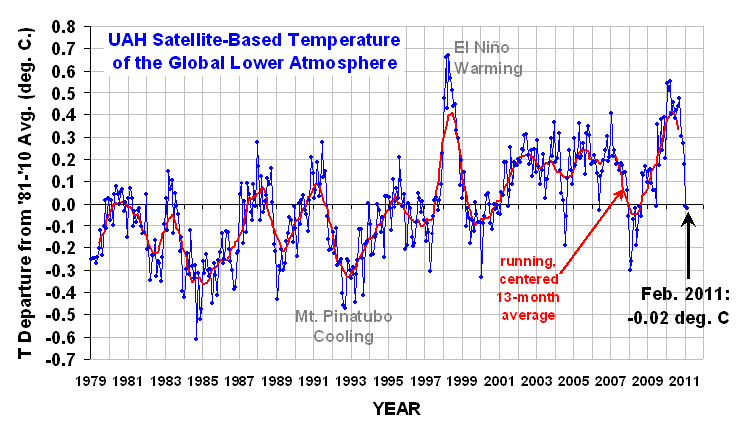YR MON GLOBE NH SH TROPICS
2010 1 0.542 0.675 0.410 0.635
2010 2 0.510 0.553 0.466 0.759
2010 3 0.554 0.665 0.443 0.721
2010 4 0.400 0.606 0.193 0.633
2010 5 0.454 0.642 0.265 0.706
2010 6 0.385 0.482 0.287 0.485
2010 7 0.419 0.558 0.280 0.370
2010 8 0.441 0.579 0.304 0.321
2010 9 0.477 0.410 0.545 0.237
2010 10 0.306 0.257 0.356 0.106
2010 11 0.273 0.372 0.173 -0.117
2010 12 0.181 0.217 0.145 -0.222
2011 1 -0.010 -0.055 0.036 -0.372
2011 2 -0.018 -0.041 0.004 -0.350
COOL LA NIÑA CONDITIONS PERSIST IN THE TROPICS
The global average lower tropospheric temperature anomaly for February 2010 (-0.02 deg. C) was almost identical to January’s anomaly (-0.01 deg. C), and even the Northern Hemisphere (-0.04 deg. C), Southern Hemisphere (0.00 deg. C), and tropics (-0.35 deg. C) anomalies did not change much from January.
 |

 Home/Blog
Home/Blog




